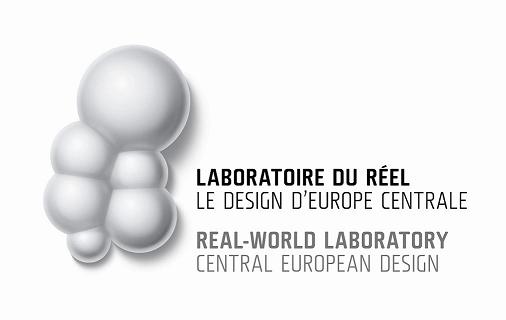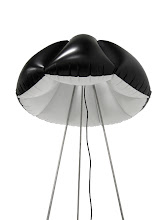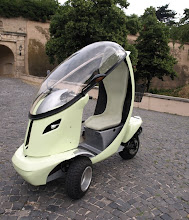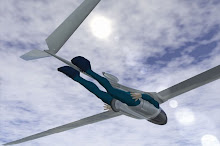Exhibition in Wien - Freiraum/ MuseumsQuartier

Tuesday, May 11, 2010
REAL WORLD LABORATORY - Central European Design
“Real World Laboratory” is presenting designs from six countries of Central Europe: Austria, the Czech Republic, Poland, Slovakia, Slovenia and Hungary. We are looking at the design from this region through the lens of the relationship between experimental design and industrial production. Conceptual design is treated as an intellectual testing ground, a source of new ideas; industrial production, on the other hand, economically justifies the designer’s work. Each country will present exhibits of a selected type: Austria – furniture, the Czech Republic – glass and porcelain, Poland – lighting, Slovakia – transportation, Slovenia – footwear, and Hungary – architectural components.
The exhibit is meant to familiarize the design of the countries of Central Europe, emphasizing its most trademark attributes. This region (with the exception of Austria) is generally viewed as being backward in terms of industrial development. As a result, our design work is regarded as being behind the times compared to that of highly industrialized countries. Of late, however, both the economy and the design of Central European countries have been dynamically developing, and the local designers are abandoning tried-and-tested designs and are increasingly putting forward new and innovative products. The significance of these small producers is worth appreciating, and the work of the designers themselves should be noted; their fresh and unconventional solutions are getting noticed by others, and stand out on the Western markets. This exhibition presents the changes taking place in Central European design. It is also meant to show design as a factor spurring cultural development in these countries. A factor which also has a significant impact on the shaping of their modern image.
"Real World Laboratory - Central European Design" - an exhibition coordinated by Polish curators was created especially for The International Design Biennial in Saint-Étienne 2008 and it was shown in the framework of one of the main presentations: FLIGHT NUMBER TEN (15-30 november 2008, Saint-Étienne).
Experimental and industrial - two faces of design
Experimental design and industrial production – the two radically different faces of design presented at the “Real‑World Laboratory” exhibition – two designer attitudes that complement, support and enrich one another. Conceptual design, which is an intellectual field of experimentation, a source of new ideas; and industrial production, which economically justifies the designer’s work, have here been brought into dialogue. A presentation of this sort demonstrates the eternal drive toward synthesis that lurks in the applied arts and in design – disciplines combining art and technology, beauty with functionality, and craftsmanship with innovation.
“Real‑World Laboratory” presents designs from six Central European countries: Austria, the Czech Republic, Hungary, Poland, Slovakia and Slovenia. These countries – with the exception of Austria – continue to be perceived as places where industry is insufficiently developed, and where design is backward compared with highly‑developed countries. The Platform for Central European Culture has facilitated co‑operation which bore fruit in this exhibition, causing – I hope – an increasingly perceptible need for these countries’ images to change, and in particular for opinions on their design to be brought up to date.
The exhibit thus links the six above‑mentioned countries into one “body,” but we ought not to look for common attributes of the exhibitions or designers. This presentation avoids comparisons and emphasizes facets that are strong and characteristic for each region. Each country presents objects of a selected type: for Austria – furniture, Slovakia – transportation, Czech Republic – glass and porcelain, Slovenia – footwear, Hungary – building materials, and Poland, the project coordinator – lighting. Our goal was not to present the best developing branches of industry, but rather to display a characteristic phenomena. Not everyone knows, for example, that Poland is one of the world’s largest furniture producers, and yet we have chosen to present lighting – a field in which we find an innovative approach that does a good job of representing our country – a certain kind of “coping with” adversity. In the porcelain designs we see the typical “Czech sense of humor,” in the Austrian furniture a sense of calm and self‑assurance, in the Hungarian designs an affinity for material and a search for new technological solutions etc. The selected exhibits speak volumes about their countries of origin, and also about their approaches to design, particularly the varying understandings of experiment and innovation we observe in the designs in question.
On the basis of this exhibit, no one should find common attributes in the design of the countries of Central Europe. And this is how it should be. They all show what is exceptional about them, what they can be proud of. There is no sense in forcing analogies, because in spite of their geographical proximity, each of these nations has gone through a more or less stormy history, and represents a slightly different economic and cultural state. A common Europe makes equal opportunities, but should not tempt us to erase cultural boundaries. Design helps us to transfer intellectual values to everyday material culture, and the more diversity we maintain in this era of globalization, the richer our future world will be.
Magda Kochanowska
Exposition in Saint‑Étienne

Exhibition design Maria Górska, Daniel Zieliński













No comments:
Post a Comment